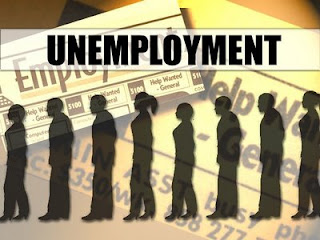PakAlumni Worldwide: The Global Social Network
The Global Social Network
Overseas Job Opportunities Dry Up For South Asians

As the global economic crisis continues to take its toll in US, Europe, Middle East and East Asia, South Asian workers overseas are being let go in large numbers
Faced with rising unemployment in Malaysia, the Kuala Lumpur government on Tuesday said it will reduce the number of foreign workers in the country to 1.8 million by 2010 from the present over two million. This decision has serious implications for tens of thousands of South Asians, mostly from Bangladesh, India and Nepal, who currently work in the island nation.
Malaysian minister Syed Hamid Albar said the authorities had managed to reduce the number of foreign workers by 60,000 since last March, according to media reports. Last week, the minister ordered the cancellation of 55,000 visas granted to Bangladeshis in 2007, eliciting protests from Bangladesh.
Though reliable unemployment figures are hard to find in the United Arab Emirates, there is evidence to suggest that joblessness is rapidly growing in the Gulf region. Dubai police have found at least 3,000 automobiles -- sedans, SUVs, regulars -- abandoned outside Dubai International Airport in the last four months. Police say most of the vehicles had keys in the ignition, a clear sign they were left behind by owners in a hurry to take flight. It is believed that the owners of these vehicles are mostly foreign workers from South Asia who have lost their jobs after Dubai's real estate crash, according to a DNA report.
As unemployment surges around the world due to the global economic crisis, the South Asian nations relying on large remittances from their nationals overseas will be particularly hit hard.
The United States government announced that employers cut another 651,000 jobs last month, driving unemployment up to 8.1 percent. Job losses in December and January were even higher than previously reported. There is anecdotal evidence that many of those losing jobs in IT and high-tech sector are H1-B visa holders.
In Asia, in China, the urban unemployment rate officially stands at 4.2 percent. However, the Chinese Academy of Social Scientists says it is closer to 9.4 percent. In China, rural unemployment is not measured because of the difficulty of doing so.
Also in Asia, in Japan, unemployment hit 4.4 percent by the end of 2008, rising at its fastest rate in 42 years. Growing lines at food banks have been one result.
In India, unemployment officially stands at 8.2 percent. However, that number is thought to largely reflect unemployment in the organized sector of the economy, which comprises just 10 percent of the country’s workforce.
In Africa, in South Africa, economists expressed “surprise” as the unemployment rate fell to 21.9 percent at the end of last year, down from 23.2 percent several months earlier.
In Europe, unemployment in Germany stands at 8.5 percent, and in Britain, it is 6.1 percent, the highest in ten years.
In Latin America, Mexico’s unemployment rate is 4.3 percent. However, anyone in Mexico who is 14 years or older and who has worked one hour a week is considered “employed.”
Until recently, the general deterioration in regional trade balances in South Asia has been offset by large remittance inflows, which represent a sizable, and generally increasing share of GDP: during 2007, 14 per cent in Nepal, 8 per cent in Bangladesh and Sri Lanka, 4 per cent in Pakistan, and 3 per cent in India. The rising unemployment among South Asian workers overseas threatens this all-important lifeline, particularly in Bangladesh, Sri Lanks and Nepal.
According to the latest estimates of the World Bank, almost 40 percent of 107 developing countries are highly exposed to the poverty effects of the current economic crisis, less than 10 percent face little risk and the remainder are moderately exposed. Bangladesh, India, Nepal and Pakistan are ranked among the 43 countries most exposed to poverty risks, raising the horrible specter of further political instability and dangerous social strife in a very important region of the world.
Related Links:
Malaysia Pulls Visas for 55,000 Bangladeshi Workers
Unemployment surges around the world
South Asian Exodus from Dubai
World Economy Worst in Sixty Years
Global Economic Crisis and Growing Poverty Risks
Twitter Feed
Live Traffic Feed
Sponsored Links
South Asia Investor Review
Investor Information Blog
Haq's Musings
Riaz Haq's Current Affairs Blog
Please Bookmark This Page!
Blog Posts
Pakistan Downs India's French Rafale Fighter Jets in History's Largest Aerial Battle
Pakistan Air Force (PAF) pilots flying Chinese-made J10C fighter jets shot down at least two Indian Air Force's French-made Rafale jets in history's largest ever aerial battle involving over 100 combat aircraft on both sides, according to multiple media reports. India had 72 warplanes on the attack and Pakistan responded with 42 of its own, according to Pakistani military. The Indian government has not yet acknowledged its losses but senior French and US intelligence officials have …
ContinuePosted by Riaz Haq on May 9, 2025 at 11:00am — 27 Comments
Pahalgam Attack: Why is the Indian Media Not Asking Hard Questions?
A recent terrorist attack on April 22 in Kashmir has killed 26 Indian tourists. Prime Minister Narendra Modi's Hindu Nationalist government took no time to blame Pakistan for the attack and vowed to "punish" the neighbor for it. Indian media, also derisively known as "Godi media", immediately went into overdrive to demand action against Pakistan. New Delhi followed up with suspending the Indus Basin Water treaty from the 1960s which guarantees 80% of the water from the three western rivers…
ContinuePosted by Riaz Haq on April 28, 2025 at 2:00pm — 18 Comments
© 2025 Created by Riaz Haq.
Powered by
![]()
You need to be a member of PakAlumni Worldwide: The Global Social Network to add comments!
Join PakAlumni Worldwide: The Global Social Network